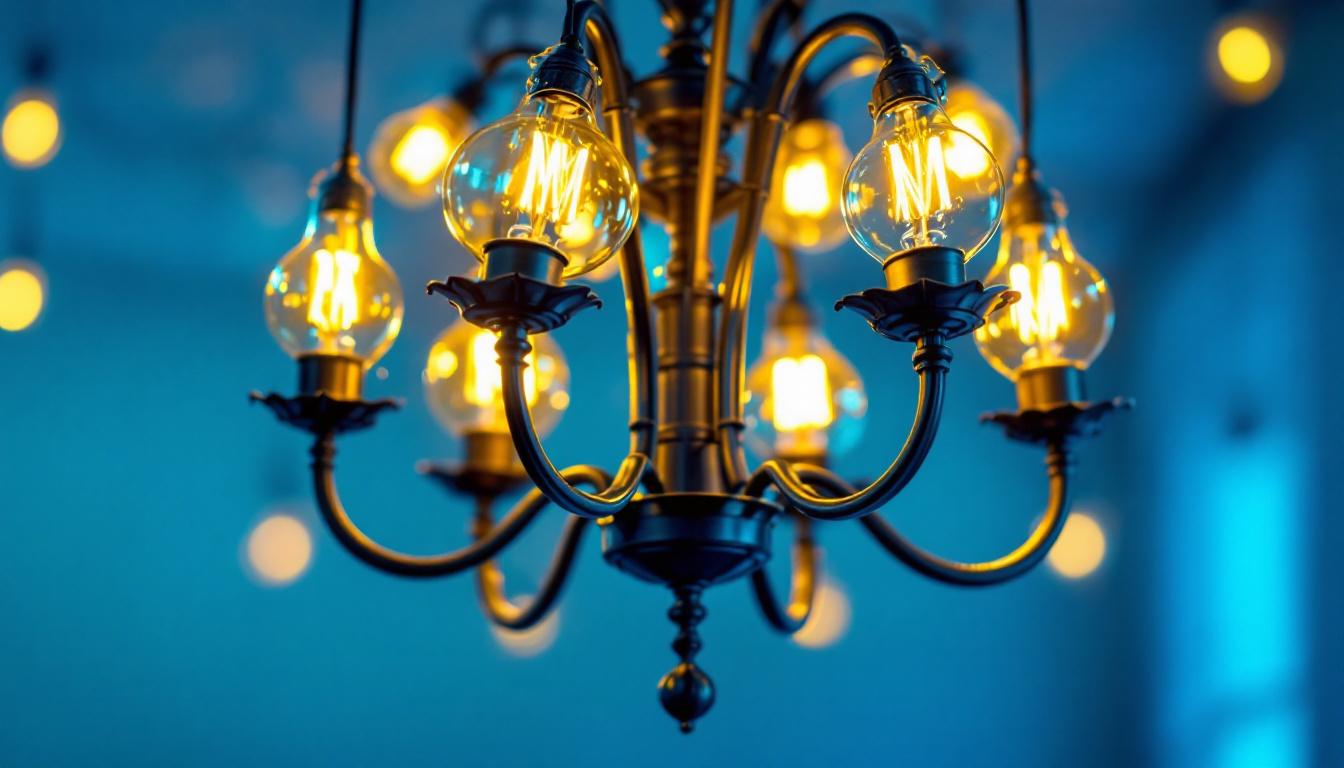
Lighting design has evolved significantly over the years, with technology playing a crucial role in enhancing both functionality and aesthetics. Among the most innovative advancements in this field are lights with sensors, which have revolutionized how spaces are illuminated. This article delves into the benefits, types, and applications of sensor lights, providing valuable insights for lighting contractors aiming to elevate their designs.
Sensor lights are fixtures equipped with technology that detects motion, ambient light levels, or other environmental factors to automatically adjust their operation. This capability not only enhances energy efficiency but also improves safety and convenience in various settings. Whether in residential, commercial, or industrial environments, sensor lights play a pivotal role in modern lighting solutions, adapting to the needs of users and the surrounding environment.
At the core of sensor lights are various types of sensors, each serving a unique purpose. Motion sensors, for instance, detect movement within a designated area, triggering the light to turn on or off accordingly. Photocells, on the other hand, measure the ambient light levels, ensuring that lights operate only when necessary. Understanding these mechanisms is essential for contractors to select the right type of sensor for specific applications. Additionally, some advanced sensor lights incorporate dual technology, combining both passive infrared (PIR) and microwave sensors to enhance detection accuracy and minimize false triggers, making them ideal for high-traffic areas or locations with varying environmental conditions.
Incorporating sensor lights into a design offers numerous advantages. Primarily, they contribute to energy savings by ensuring lights are only active when needed. This not only reduces electricity costs but also extends the lifespan of the bulbs. Furthermore, many sensor lights are now equipped with LED technology, which is inherently more energy-efficient and has a longer operational life compared to traditional incandescent bulbs.
Moreover, sensor lights enhance safety and security. For instance, outdoor sensor lights can deter intruders by illuminating pathways and entry points when movement is detected. In residential settings, they provide convenience for homeowners who may have their hands full, allowing lights to activate automatically as they approach. In commercial spaces, sensor lights can improve employee safety by ensuring that stairwells, parking lots, and hallways are well-lit during off-hours, reducing the risk of accidents and enhancing overall security. Additionally, some models offer customizable settings, allowing users to adjust sensitivity, duration, and brightness, tailoring the lighting experience to their specific needs and preferences.
There are several types of sensor lights available, each catering to different needs and environments. Understanding these types is crucial for contractors looking to implement effective lighting solutions.
Motion sensor lights are perhaps the most common type. They are ideal for outdoor areas, garages, and hallways. These lights can be programmed to remain off until they detect movement, making them energy-efficient and practical for high-traffic areas.
In addition to residential applications, motion sensor lights are increasingly used in commercial settings, such as offices and retail spaces, to enhance security and improve energy efficiency.
Photocell sensors are designed to respond to ambient light levels. They automatically turn lights on at dusk and off at dawn, making them an excellent choice for outdoor lighting, such as streetlights and garden lights. This type of sensor ensures that lights are only active during the night, further contributing to energy savings.
Contractors should consider the geographical location and seasonal variations when installing photocell sensors, as these factors can influence their effectiveness.
For more complex environments, dual technology sensors combine both motion and photocell technology. This combination allows for greater flexibility and efficiency, as the lights will activate only when both motion is detected and ambient light levels are low.
These sensors are particularly useful in areas where consistent lighting is essential, such as stairwells or parking garages, where safety is a priority.
The versatility of sensor lights makes them suitable for a wide range of applications. From residential to commercial and industrial settings, their benefits can be harnessed in various ways.
In residential spaces, sensor lights can enhance safety and convenience. Homeowners can install motion sensor lights in entryways, garages, and backyards, ensuring that they are greeted with illumination when arriving home at night. Additionally, these lights can be programmed to turn off after a set period, preventing unnecessary energy consumption.
Photocell sensors are also popular in outdoor lighting designs, providing homeowners with a hassle-free solution for garden and pathway illumination. The automatic operation allows for a seamless outdoor experience, enhancing the overall aesthetic of the property.
In commercial environments, sensor lights play a critical role in energy management. Retailers can use motion sensor lights to illuminate displays only when customers are present, creating an inviting atmosphere while minimizing energy costs. Additionally, these lights can enhance security by ensuring that areas remain well-lit during business hours.
Moreover, in offices, sensor lights can help create a more productive environment. By using motion sensors in meeting rooms and common areas, lights can automatically turn on when people enter and turn off when the space is vacant, promoting energy efficiency and reducing costs.
In industrial settings, sensor lights are essential for safety and operational efficiency. Motion sensor lights can illuminate work areas only when employees are present, reducing energy consumption while ensuring adequate lighting for tasks. This is particularly important in warehouses and manufacturing facilities, where safety is paramount.
For outdoor settings, such as parking lots and pathways, sensor lights provide security and visibility. They deter potential intruders and ensure that pedestrians feel safe while navigating these areas at night.
When integrating sensor lights into a design, several factors must be considered to ensure optimal performance and aesthetics. Understanding these considerations will help contractors deliver high-quality lighting solutions.
The placement of sensor lights is critical to their effectiveness. Contractors should assess the specific area and determine the best locations for installation to maximize coverage. Motion sensors, for example, should be positioned to detect movement in high-traffic areas while avoiding false triggers from passing cars or animals.
Additionally, the height at which lights are installed can impact their performance. Higher installations may cover larger areas but can also reduce sensitivity. Striking a balance between coverage and sensitivity is essential for optimal functionality.
As smart home technology continues to gain popularity, integrating sensor lights with smart systems can enhance their functionality. Many modern sensor lights can be connected to home automation systems, allowing homeowners to control their lighting remotely via smartphones or voice assistants.
This integration not only provides convenience but also allows for advanced programming options, such as scheduling and scene setting, further enhancing the lighting design.
When selecting sensor lights, energy efficiency should be a top priority. LED lights are an excellent choice due to their long lifespan and low energy consumption. By combining LED technology with sensors, contractors can create lighting designs that are both environmentally friendly and cost-effective.
Additionally, considering the use of solar-powered sensor lights for outdoor applications can further enhance sustainability. These lights harness solar energy during the day and provide illumination at night, reducing reliance on traditional power sources.
While sensor lights offer numerous benefits, there are challenges that contractors may encounter during installation and operation. Understanding these challenges and their solutions can help ensure a successful implementation.
One common challenge with motion sensor lights is false triggers, which can occur due to pets, passing vehicles, or environmental factors such as wind. To mitigate this issue, contractors should select sensors with adjustable sensitivity settings. This allows for fine-tuning based on the specific environment, reducing the likelihood of unnecessary activation.
Additionally, strategically positioning sensors away from high-traffic areas or using dual technology sensors can help minimize false triggers while maintaining effective coverage.
Regular maintenance is essential for ensuring the longevity of sensor lights. Dust and debris can accumulate on sensors, impairing their functionality. Contractors should advise clients on the importance of periodic cleaning and inspection to maintain optimal performance.
Furthermore, selecting high-quality fixtures with durable materials can enhance longevity and reduce the frequency of replacements, ultimately benefiting both the contractor and the client.
The landscape of lighting design continues to evolve, with sensor technology at the forefront of innovation. As advancements in technology emerge, several trends are expected to shape the future of sensor lighting.
The integration of sensor lights with the Internet of Things (IoT) is set to revolutionize lighting design. As more devices become interconnected, sensor lights will be able to communicate with other smart home systems, creating a seamless and intuitive user experience.
This connectivity will allow for advanced features, such as automated adjustments based on occupancy patterns and environmental changes, further enhancing energy efficiency and convenience.
Future sensor lighting solutions are likely to offer enhanced customization options. Users may have the ability to program specific settings based on their preferences, allowing for tailored lighting experiences that suit individual needs.
Contractors should stay informed about these advancements to provide clients with cutting-edge solutions that align with their evolving expectations.
Lights with sensors represent a significant advancement in lighting design, offering numerous benefits for both residential and commercial applications. By understanding the types, applications, and design considerations of sensor lights, contractors can create innovative and efficient lighting solutions that enhance safety, convenience, and energy efficiency.
As technology continues to evolve, staying informed about the latest trends and advancements in sensor lighting will be crucial for contractors looking to remain competitive in the industry. Embracing these innovations will not only improve lighting designs but also contribute to a more sustainable and efficient future.
Ready to harness the power of sensor lights and elevate your lighting designs? At LumenWholesale, we provide lighting contractors with an exceptional range of high-quality, spec-grade sensor lighting options at unbeatable wholesale prices. Say goodbye to local distributor markups and hello to superior products that meet the highest industry standards. With our commitment to affordability, quality, and convenience, you’ll enjoy hassle-free bulk purchasing with free shipping, ensuring your projects shine without straining your budget. Discover the perfect blend of performance and value. Wholesale Lighting at the Best Value awaits you at LumenWholesale.

Discover the ultimate guide for lighting contractors on selecting the perfect LED lights.

Explore the ultimate guide for lighting contractors in “Dusk Till Dawn Lights,” offering expert insights on innovative lighting solutions, installation tips, and design trends to transform any space from ordinary to extraordinary..

Uncover the essentials of washer outlet plugs with our comprehensive guide tailored for lighting contractors.

Discover the essential compliance guidelines and design tips for selecting decorative light bulbs for chandeliers.